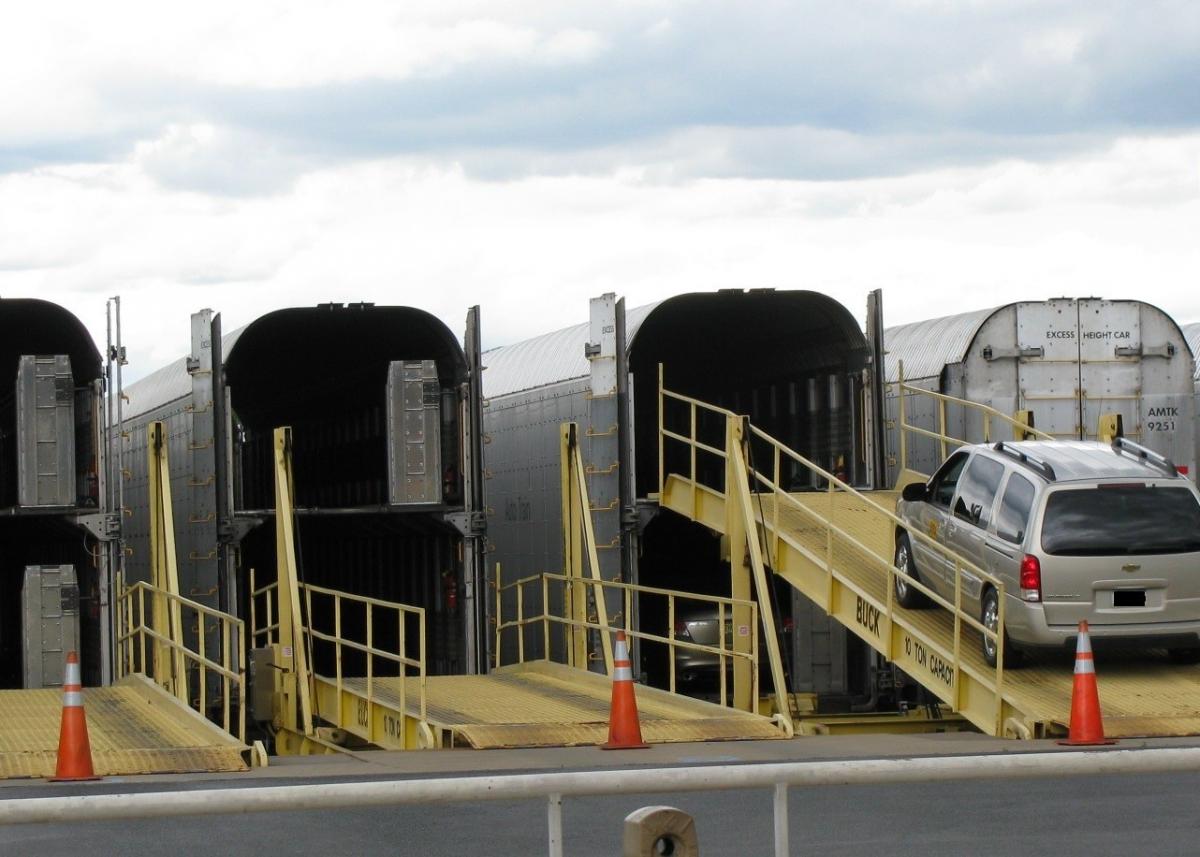Riding an Old Friend
We recently took our first trip north since the COVID pandemic, and we returned to the same form of travel we have taken many times over the last 50 years – the Amtrak Auto Train. And we wonder why this concept, one of the few long-distance rides to make money, has not been duplicated all over the country.
The train takes your car aboard at Sanford, Florida, and terminates at Lorton, Virginia, a short hop south of Washington, D.C. Prices vary according to season but ours cost $1400 each way. There are three classes to choose from – coach seating, a roomette, or a private bedroom. We had the most costly - a bedroom. Sounds expensive, until you consider saving on several tanks of gas and general wear on the car, meals, a night or two in a motel, and the cost of renting a car for 10 days up north.

The Amtrak Auto Train
This concept has had plenty of time to prove its worth. We go back with Auto Train when it was launched in the early 1970s. It was a private venture which was immediately successful. We liked the idea so much that we bought stock in the company. Alas, that did not work out. Buoyed by its quick success, management tried to expand to the midwest. The railroads on that complex route were not up to the standard of the east coast line and management was warned that its equipment was too heavy for the tracks. The result was a derailment, and Auto Train wound up in litigation with its landlord railroads. The losses forced it into bankruptcy.
The idea had proved its potential, however, and newly formed Amtrak decided to revive it in the late 70s. It has been running ever since, making money most years. Currently, it is one of only three Amtrak lines in the black.
We have wondered over the years why this idea has not been adopted all over the country. Considering the millions of cars crowding every interstate, you have to believe that 340 cars a day (about the max for Auto Train) would not choose this relaxed mode of travel.
Most obvious is the midwest route. Certainly, there is plenty of traffic from the Chicago and Michigan areas to Florida. To guarantee success, the auto train could combine with a new conventional service from South Florida, making stops at the Amtrak stations as far as Sanford. From there, connected to an auto train, it would make only major stops - Atlanta, Chatanooga, Nashville, Louisville, and Indianapolis - before reaching a new station south of Chicago. There the conventional train could be detached and complete the route to Chicago and possibly even Milwaukee. Those stops would slow the whole train a bit, but Auto Train users are obviously not in a big hurry.
That may require upgrading some of the rails on that route to handle passenger traffic. Amtrak is already considering a new service from Atlanta to Nashville, through Chattanooga, and along the scenic Tennessee River. That would cover a large part of an Auto Train route.
When that train proved successful, as we believe it would, the new terminal near Chicago could be expanded to provide an auto train on existing Amtrak routes south to New Orleans and west to Los Angeles, the San Francisco area, and Seattle. Again it could combine with regular Amtrak trains serving the busier stations along the way. It would also seem practical on these very long (2,000 miles plus) routes to provide midway terminals to detach and load some of the Auto Train. Denver would be an obvious place on the California Zephyr to Oakland, California.
Those long-distance trains are probably too ambitious at the moment, but the midwest train is not. Indeed it is a concept that should have been continued after the flawed start 50 years ago.

auto train
This Comment had been Posted by tom mc gill
as snowbirds from new jersey, we took the auto train for years booking coach and found it very satisifisfactory. our final destination was Naples where we wintered.